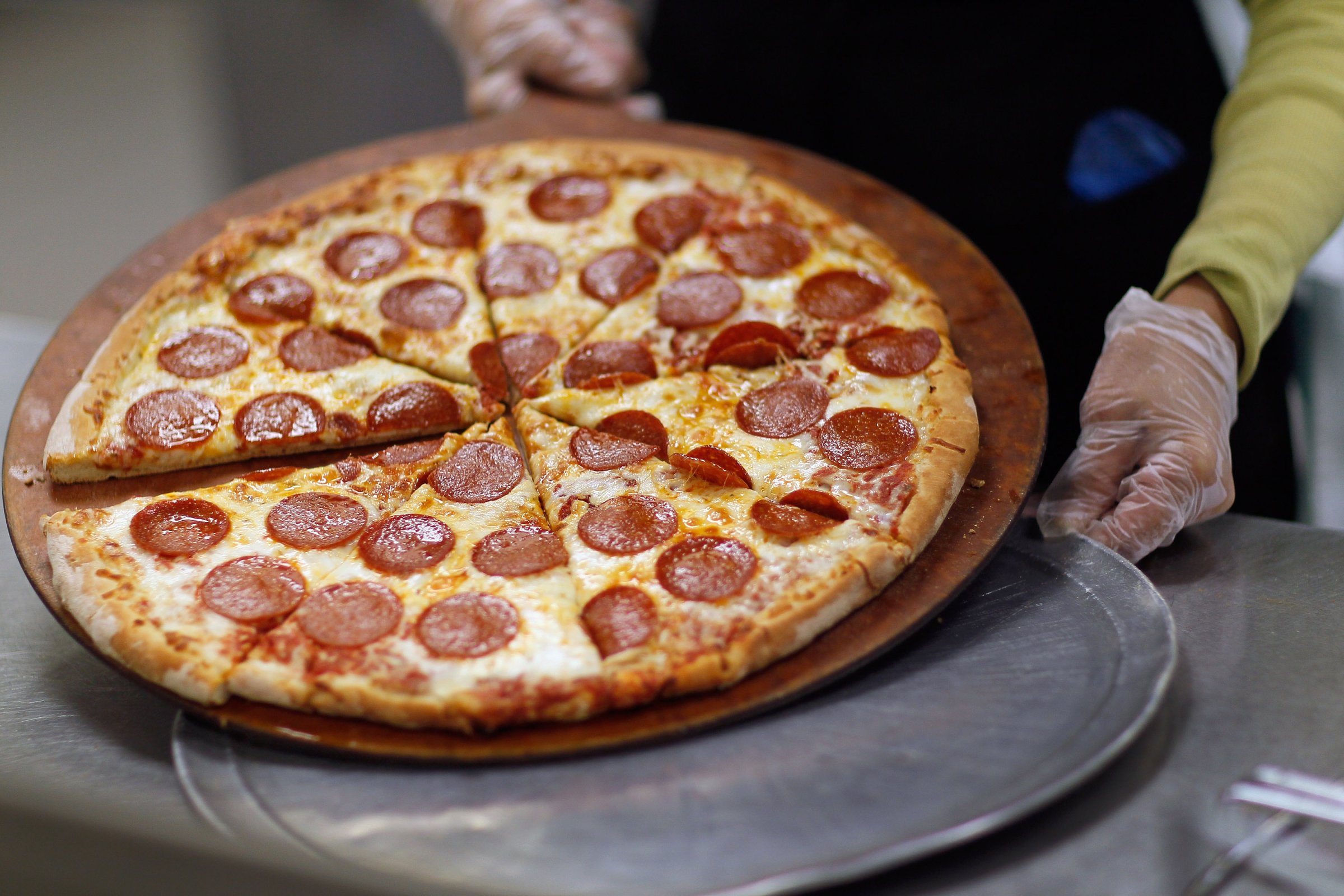
Pizza chains these days are watching customers drive right by, then filling up on pizza when they fill up at the gas station.
Market research company the NPD Group says that the amount of pizza dough and crust shipped to convenience stores shot up by 27% in only a year. We’re collectively buying 20% more servings of pizza from these outlets than we were a year ago, while servings at traditional carry-out pizza chains are just treading water.
Convenience stores have ramped up their food offerings and gotten more aggressive at courting people outside their core customer base of young to middle-aged blue-collar men, says NPD Group restaurant industry analyst Bonnie Riggs.
“They’ve placed a lot of focus on food service and food ready for immediate consumption,” she says. “They’re competing directly with other fast food concepts now.”
Jeff Lenard, spokesman for NACS, the National Association of Convenience Stores, says fifth-biggest pizza seller in the country — behind Dominos, Pizza Hut, Papa John’s and Little Caesars, respectively — Casey’s General Stores, an Iowa-based convenience store chain.
According to NACS, convenience stores sold $40.6 billion worth of food prepared on-site, coffee and fountain drinks in 2014, an annual increase of around 10%. That’s roughly 20% of all sales, and prepared food makes up a growing percentage of the industry’s profits.
One way they’ve done this is by doubling down on the variety and quality of food they offer, Riggs says. Chains like Wawa and Sheetz are attracting millennials and women — people who wouldn’t typically think of a gas station pit stop as the time or place to grab a slice. “You go in some of those places, you would not think it’s a convenience store,” she says.
NACS data bears this out. Almost 60% of customers and 70% of millennial customers say they’d eat convenience store fare, and more than 40% customers think it’s possible to get fresh or healthy food just a few aisles over from the beef jerky and cell-phone car chargers.
Aside from the taste and nutrition factor, consumers today are chiefly concerned with food that’s even cheaper and faster than fast food. Riggs says that fast food outlets, to compete with the more upscale chains like Panera Bread and Chipotle Mexican Grill, have rolled out expanded menus and new concepts, which bogs down the whole “fast” part of fast food, and often costs more. “Consumers, especially millennials, are looking for a better experience. It’s a quick in and out,” she says.
More Must-Reads from TIME
- Cybersecurity Experts Are Sounding the Alarm on DOGE
- Meet the 2025 Women of the Year
- The Harsh Truth About Disability Inclusion
- Why Do More Young Adults Have Cancer?
- Colman Domingo Leads With Radical Love
- How to Get Better at Doing Things Alone
- Michelle Zauner Stares Down the Darkness
Contact us at letters@time.com